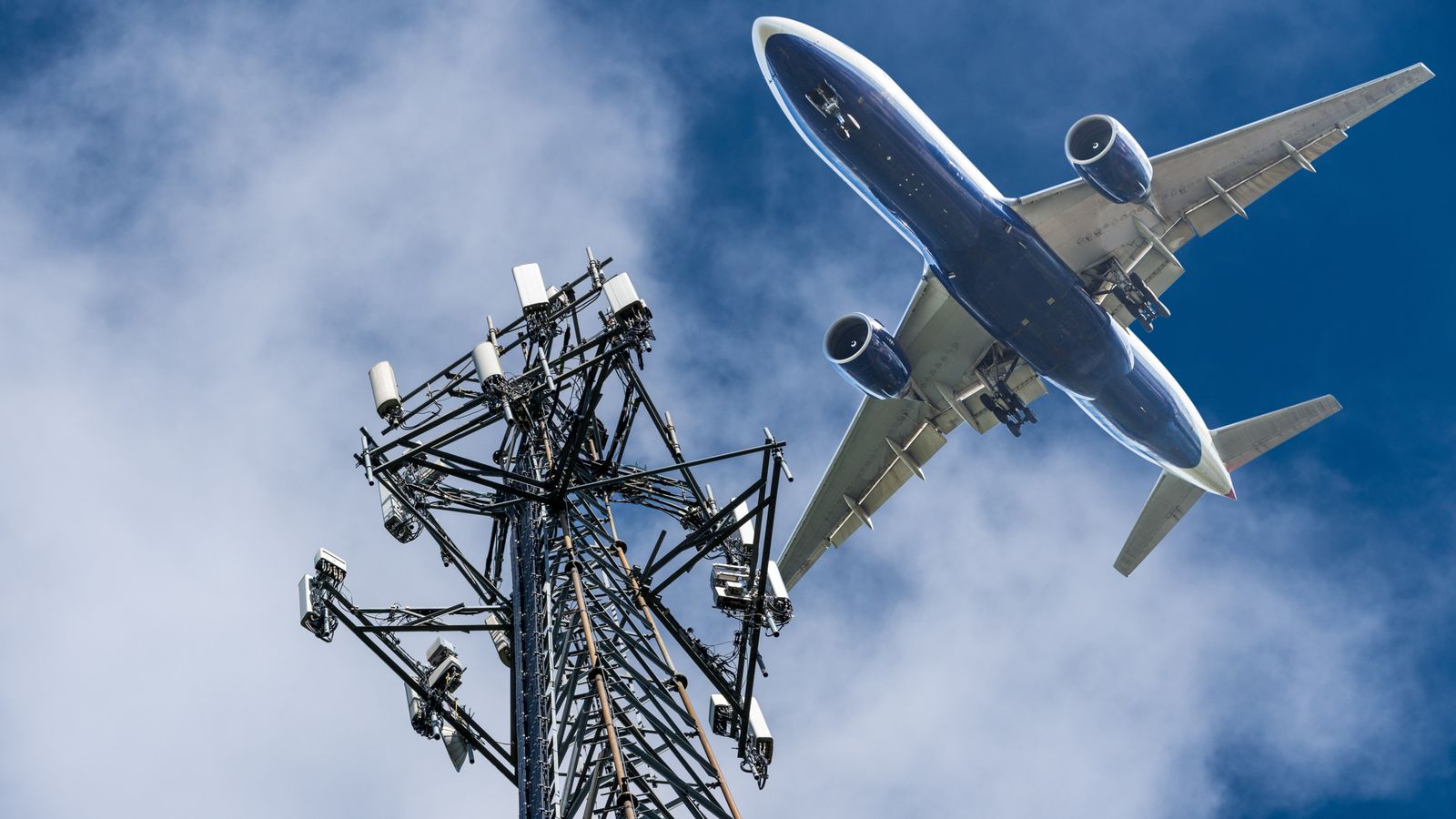Air travel could be disrupted during the summer holiday peak, according to airlines, after the US refused to budge on a deadline for adding new sensors to planes.
The sensors are to ensure 5G wireless technology does not interfere with aeroplane altimeters, which are instruments used for measuring altitude – particularly crucial for bad-weather landings.
Pete Buttigieg, the US transportation secretary, said on Tuesday that the Biden administration does not plan to give airlines more time to upgrade altimeters.
Last year, tech companies Verizon and AT&T had come to an agreement to delay the rollout of 5G technology until 1 July 2023 to allow airlines time to retrofit their altimeters.
The decision came after several previous delays.
However, last week, the Federal Aviation Administration (FAA) also said it did not plan to extend the deadline before new rules take effect.
What rules are the FAA proposing?
Earlier this year, the FAA said it is proposing a requirement for passenger aircraft in the US to have 5G C-band tolerant radio altimeters or to install approved filters by early 2024.
The rules affect nearly 20,000 planes worldwide.
The proposed airworthiness directive requires airlines to revise aeroplane flight manuals to prohibit low-visibility landings after 30 June unless retrofits have been completed.
Airlines for America, a trade group representing American Airlines (AAL.O), Delta Air Lines (DAL.N), United Airlines (UAL.O) and others, said “carriers are working diligently to ensure fleets are equipped with compliant radio altimeters, but global supply chains continue to lag behind current demand. Any government deadline must consider this reality”.
Risk of summer travel disruption
On Tuesday, the International Air Transport Association – which represents more than 100 airlines which fly in and out of the US – said more time is needed and that many airlines will have to retrofit most of their aircraft twice in just five years.
It said: “Supply chain issues make it unlikely that all aircraft can be upgraded by the 1 July deadline, threatening operational disruptions during the peak northern summer travel season.
“Airlines did not create this situation. They are victims of poor government planning and coordination.”
The upgrades could cost £511m, the association added.
How does 5G interfere with aircraft and flights?
Last year, the FAA said it was working to ensure radio signals from 5G technologies can safely coexist with flight operations in the US.
Concerns that 5G service could interfere with plane altimeters led to brief disruptions at some US airports as international carriers cancelled some flights in 2022.
Following the disruptions, the Federal Aviation body said: “Because the proposed 5G deployment involves a new combination of power levels, frequencies, proximity to flight operations, and other factors, the FAA must impose restrictions on flight operations using certain types of radio altimeter equipment close to antennas in 5G networks.
“These safety restrictions could affect flight schedules and operations.
“The FAA continues to work every day to reduce effects of this disruption as we make progress to safely integrate 5G and aviation.”
Acting FAA Administrator Billy Nolen reiterated last week the FAA has given airlines until 1 July of this year to retrofit.
He added if planes had not installed the sensors by 1 July, they will not be able to take advantage of lower visibility routes – which could result in diversions for affected flights.
What is 5G?
5G is the latest version of mobile network technology. It simply means the ‘fifth generation’ of mobile networks and follows previous versions, 3G and 4G.
Each new generation of the technology has consistently changed how we have all accessed the internet while moving around.
According to Ofcom, 5G enables faster browsing and “is much faster than previous generations of wireless technology”.
But it’s not just about speed.
5G also offers greater capacity, allowing thousands of devices in a small area to be connected at the same time.
Read more from Sky News:
Is 5G overhyped?
5G signals disrupt flights in the US
What is C-band 5G and why is it important?
C-band is part of the radio spectrum that enables fast speeds on a wider scale for mobile phones and for internet at home.
According to HighSpeedInternet.com, wireless companies use radio waves to grant you easy access to the internet from your phone and C-band falls in the middle of the radio spectrum used for 5G networks.
Some benefits of C-band 5G are faster speeds and longer ranges without requiring phone towers.
Which wireless carriers agreed to hold off the 5G release?
Verizon (VZ.N) and AT&T (T.N) had voluntarily agreed to delay some C-Band 5G usage until 1 July as airlines worked to retrofit aeroplane altimeters.
Four major networks in the US have also agreed to some voluntary actions to address aviation safety concerns and allow full use of the C-band wireless spectrum for 5G use.
The agreement with Verizon, AT&T, T-Mobile US and USCellular followed extensive discussion with the FAA, allowing networks to increase power levels to get to full C-band use by 1 July.
“We believe we have identified a path that will continue to enable aviation and 5G C-band wireless to safely co-exist,” said Acting FAA Administrator Billy Nolen.
“We appreciate the willingness of Verizon and AT&T to continue this important and productive collaboration with the aviation industry.”
Be the first to get Breaking News
Install the Sky News app for free
Has 5G already been rolled out in the US?
According to technology site Lifewire – these are some of the networks around the US that have rolled out 5G:
• Verizon
• AT&T
• T-Mobile/Sprint
• USCellular
• C Spire
• Charter’s Spectrum Mobile
• Comcast/Xfinity
• Starry
• Google Fi & Simple Mobile
• Nex-Tech Wireless
• US Mobile
• Mint Mobile
• Cricket Wireless
• Visible
• Dish
• Cellcom









